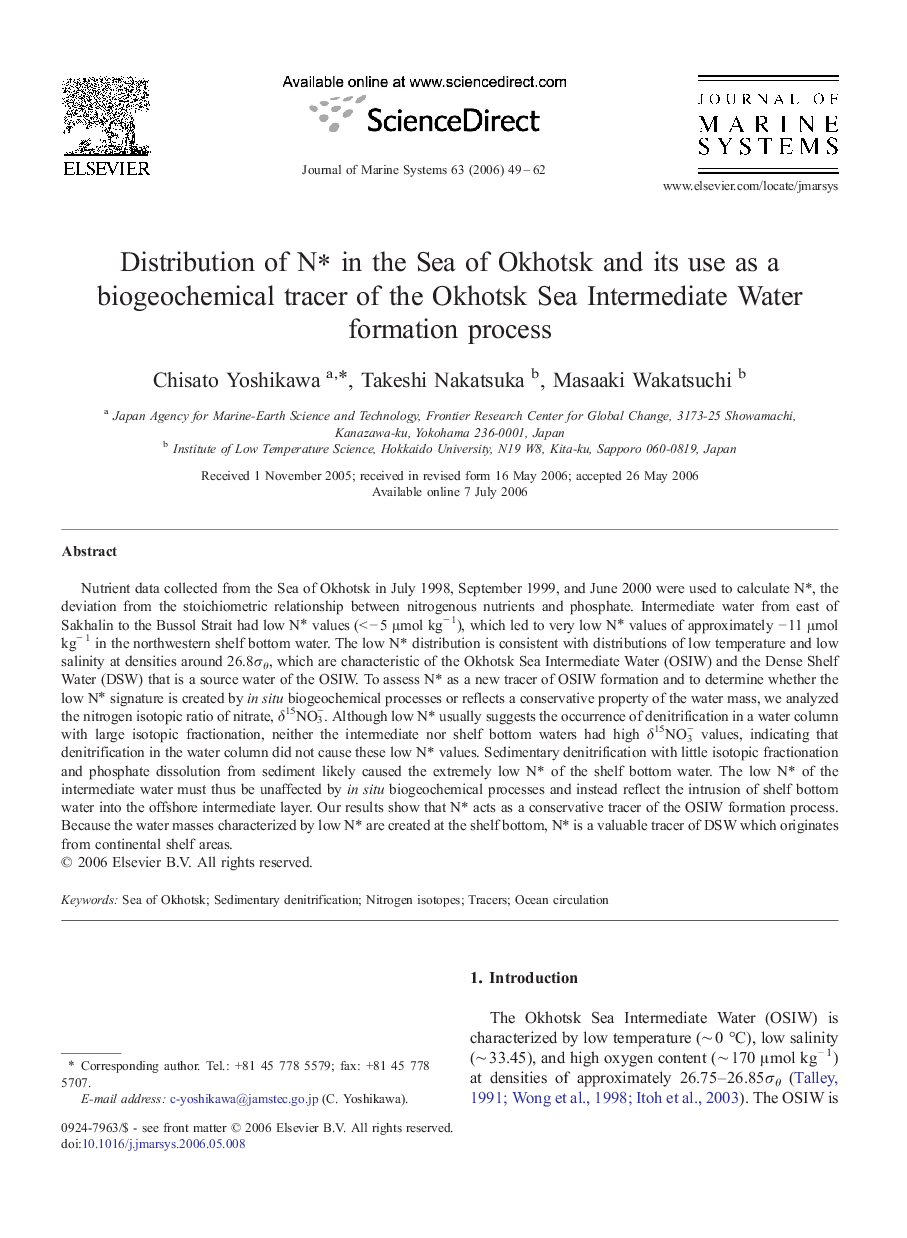| Article ID | Journal | Published Year | Pages | File Type |
|---|---|---|---|---|
| 4549175 | Journal of Marine Systems | 2006 | 14 Pages |
Nutrient data collected from the Sea of Okhotsk in July 1998, September 1999, and June 2000 were used to calculate N⁎, the deviation from the stoichiometric relationship between nitrogenous nutrients and phosphate. Intermediate water from east of Sakhalin to the Bussol Strait had low N⁎ values (< − 5 μmol kg− 1), which led to very low N⁎ values of approximately − 11 μmol kg− 1 in the northwestern shelf bottom water. The low N⁎ distribution is consistent with distributions of low temperature and low salinity at densities around 26.8σθ, which are characteristic of the Okhotsk Sea Intermediate Water (OSIW) and the Dense Shelf Water (DSW) that is a source water of the OSIW. To assess N⁎ as a new tracer of OSIW formation and to determine whether the low N⁎ signature is created by in situ biogeochemical processes or reflects a conservative property of the water mass, we analyzed the nitrogen isotopic ratio of nitrate, δ15NO3−. Although low N⁎ usually suggests the occurrence of denitrification in a water column with large isotopic fractionation, neither the intermediate nor shelf bottom waters had high δ15NO3− values, indicating that denitrification in the water column did not cause these low N⁎ values. Sedimentary denitrification with little isotopic fractionation and phosphate dissolution from sediment likely caused the extremely low N⁎ of the shelf bottom water. The low N⁎ of the intermediate water must thus be unaffected by in situ biogeochemical processes and instead reflect the intrusion of shelf bottom water into the offshore intermediate layer. Our results show that N⁎ acts as a conservative tracer of the OSIW formation process. Because the water masses characterized by low N⁎ are created at the shelf bottom, N⁎ is a valuable tracer of DSW which originates from continental shelf areas.
